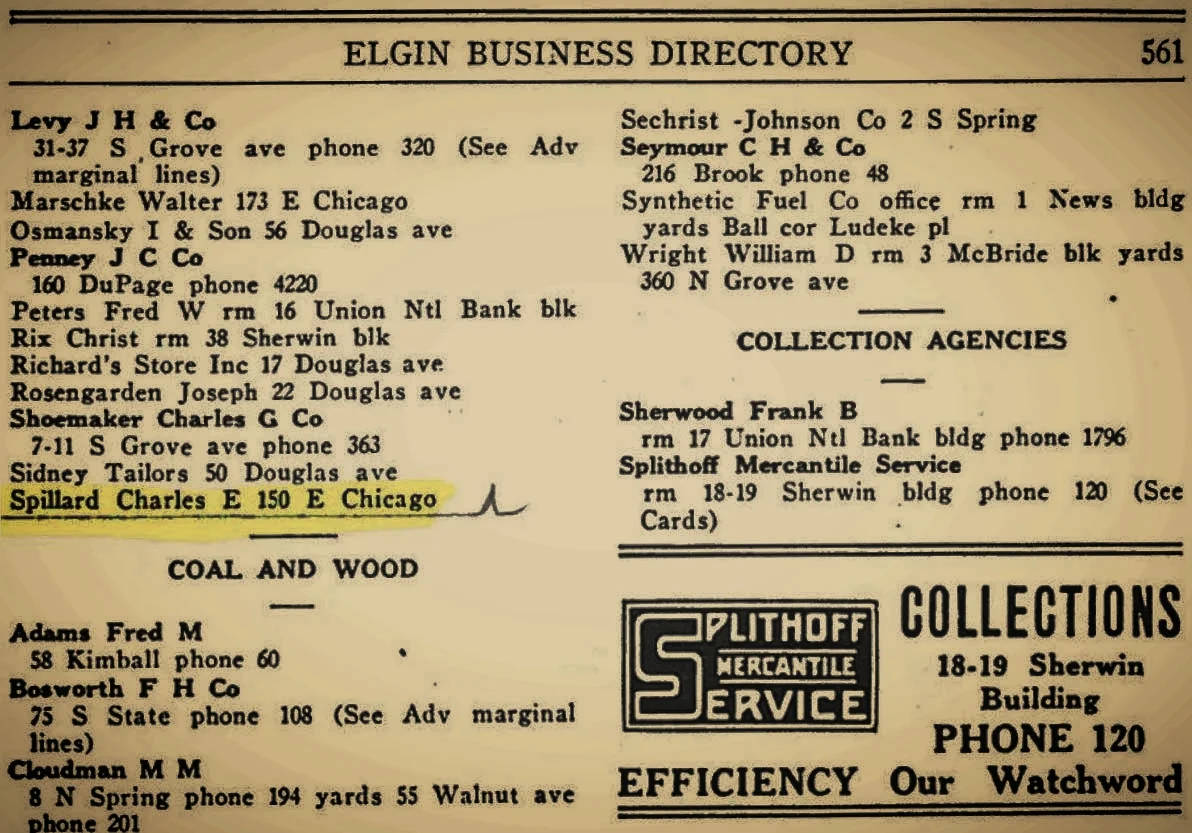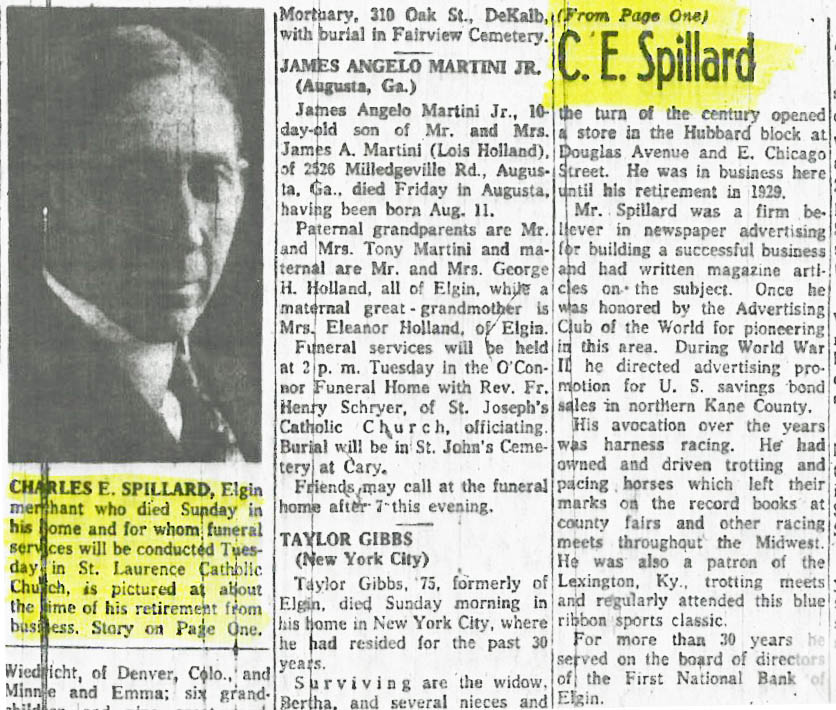324 VINCENT PLACE
HISTORIC SIGNIFICANCE
The home was built by a prominent local merchant – Charles E. Spillard. It was completed in 1927 as more of the west side of Elgin was being developed. Edward J. O’Beirne and his wife Mildred H. O’Beirne lived at 320 Vincent Place and conveyed a portion of their land to the Spillards.
In the early 1900s, as Elgin thrived thanks to the popularity of Elgin Watches, The Elgin Merchants’ Association formed a charter in town for various businesses to meet and help foster inclusivity and friendly business spirits in town. Charles Spillard was one of the first directors of the association, and was a tailor and clothing merchant. During WWII, Spillard was integral in the advertising of U.S. savings bond sales in Kane County.
It is unknown for how the Spillards lived in the home, or who has owned or occupied the home since, but its ties to Elgin’s history are squarely grounded with even just this family’s ownership.
ARCHITECTURAL SIGNIFICANCE
324 Vincent Place is an excellent example of one of the very few Italian Renaissance styles in Elgin. Significant characteristics include the arched windows and the ceramic tile roof. Additionally significant features include the low pitched hipped roof, wide overhanging eaves, the smallest window on the top story, and an entryway accented by small classical columns. While this style is less common than its 1920 contemporaries like the Craftsman or Tudor Revival, the construction date of 1927 falls right within the peak range of popularity for this style.
TIMELINE OF PREVIOUS OWNERS
Sources: 1993 Heritage Plaque Application; Audio: TextAloud






